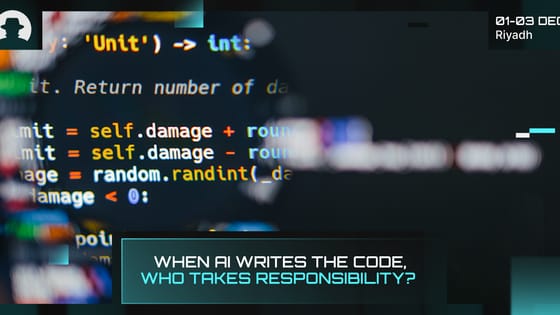
Why identity protection has to level up in 2026
Identity fraud in 2026 is AI-driven, industrial and costly. Learn how deepfakes, fraud rings and new cyber insurance rules are changing identity protection.
Read More
If you feel like vulnerability management in 2025 still feels like pushing a boulder uphill, only to watch it roll back down with the next wave of alerts, you’re not alone.
According to a new report on remediation operations by Seemplicity, organisations are investing; with 86% increasing their security budgets this year. In spite of this, 30% still say budget constraints are their biggest barrier to adopting new vulnerability management tools.
We’re looking at what’s holding organisations back from fixing vulnerabilities faster and smarter.
One of the most persistent problems is the sheer volume of alerts.
Half of IT and security decision-makers say their vulnerability scanning tools generate a high level of noise – so many alerts that it’s hard to know what actually matters. And that noise causes delays.
The data from Seemplicity shows that organisations with high noise levels take an average of two days longer to remediate critical vulnerabilities compared to those with low noise. So it’s far more than an inconvenience; it’s a real barrier to effective decision-making and rapid, effective remediation.
Security doesn’t happen in isolation, and the gap between security and development is still far too wide. A concerning 91% of organisations report delays in remediation – and the top reason is poor collaboration and communication.
Even though 85% of teams say they ‘collaborate well,’ the data tells a different story. When collaboration is poor, manual task assignment for remediation jumps to 60%, ownership is unclear, and progress slows to a crawl.
Tight development deadlines, misaligned priorities, and lack of context from security teams are behind the divide. And the result is that developers are frustrated; remediation teams are disengaged or unsure what to focus on; and vulnerabilities are left open far too long.
Knowing there’s a vulnerability is one thing. Knowing what to do about it is another.
The report found that 41% of organisations struggle to translate security findings into clear, actionable steps for dev and ops teams. Without clarity and prioritisation, security fixes sit in backlogs while everyone argues about who owns what.
When we spoke to Lakshmi Hanspal (Strategic Advisor and Investor at Silicon Valley CISO Investments) about the impact of a breach, she said:
“When trust is broken in the security context, the impact reverberates far beyond the immediate epicentre. It's like a stone thrown into a pond – the initial splash might be contained, but the ripples touch every shore.”
And this is true when trust isn’t maintained within a team, even before a breach occurs. If communication is unclear and people aren’t sure what they should be doing or what they’re responsible for, vulnerabilities become an increased risk.
While structured frameworks like VulnCheck KEV and EPSS are among the most effective for prioritising vulnerabilities, only a small percentage of organisations actually use them. Instead, many still rely on first-come, first-served; or internal scoring systems that don’t necessarily reflect real-world risk.
This misalignment explains why 42% of respondents say they struggle to prioritise vulnerabilities effectively. If you don’t know which fires to put out first, you’re always on the back foot.
Automation is everywhere, but not everywhere it needs to be.
Yes, 97% of organisations report using automation in their vulnerability management processes. But just 35% have fully automated workflows – down from 41% last year. And nearly 40% of respondents say more than half of their process is still manual.
Manual steps mean bottlenecks, inconsistency, and delay. Automating the easy stuff isn’t enough anymore. It’s time to go further.
When asked where AI could help most, organisations in the study pointed to automated remediation as the top use case – up from third place last year. There’s a strong demand for AI to go beyond detection and help actually fix the problems.
And that optimism is backed by action: 88% of organisations plan to increase their AI investment over the next five years. But unless we see meaningful adoption soon, we’ll keep circling the same problems.
When we asked Yassir Abousselham (Founder and CEO at Silicon Valley Cyber) what lessons we can learn from the 2024 Crowdstrike IT outage, he said:
“Given the increasingly interconnected technology ecosystem, there is no guarantee that similar events will not occur in the future.
“To improve resilience against similar outages, organisations, especially those in critical industries, should assess the potential impact of third-party software on their service availability and update their business continuity procedures accordingly.”
As AI cybersecurity tech becomes more sophisticated, this might include working with vendors who leverage AI to strengthen and monitor their systems.
The barriers standing in the way of effective vulnerability management are structural, cultural, and operational. As Lakshmi Hanspal put it: “Stop treating security as a compliance checkbox rather than a cultural cornerstone.”
So where do we go from here?
To get vulnerability management right in 2025, organisations have to align people, processes, and platforms around the reality that security is as much about mindset as it is about tech.
Join the newsletter to receive the latest updates in your inbox.

Identity fraud in 2026 is AI-driven, industrial and costly. Learn how deepfakes, fraud rings and new cyber insurance rules are changing identity protection.
Read More
New research from Veracode and Gartner shows that while AI is accelerating software development, it’s also accelerating risk.
Read More
Three recent campaigns (Tsundere, Matrix Push C2, and Sturnus) show attackers shifting command-and-control and data theft into places we treat as harmless UX plumbing.
Read More